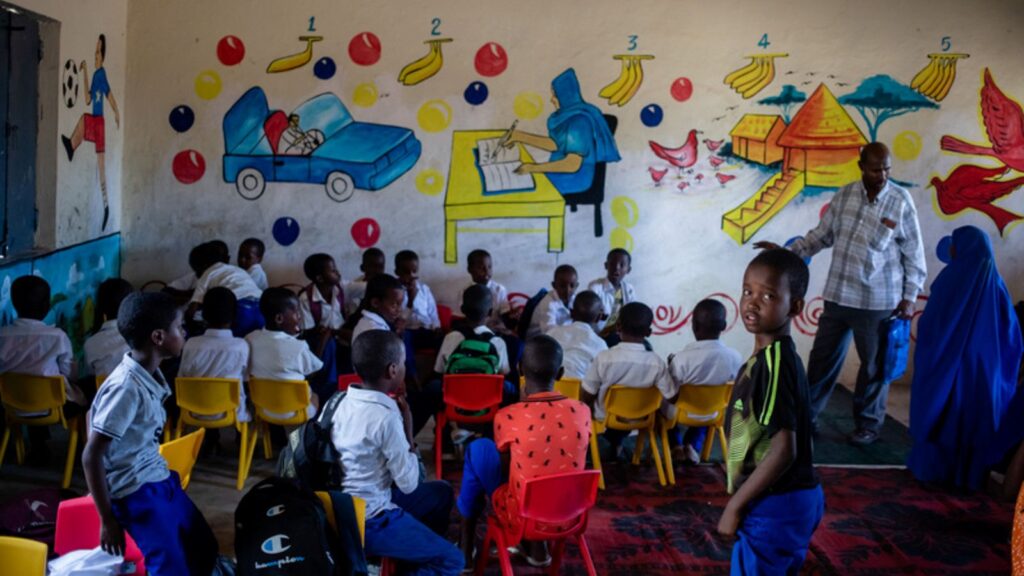Education is a fundamental human right and a cornerstone for national development.
In Somalia, decades of conflict, political instability, and limited infrastructure have severely disrupted the education sector.
Yet, in recent years, signs of recovery and innovation have started to reshape Somalia’s educational landscape.
What are the Challenges Facing Education in Somalia?
1. Lack of Infrastructure
Many schools in Somalia lack basic facilities such as classrooms, sanitation, and electricity.
Rural areas are particularly underserved, making it difficult for children.
Especially girls—to access quality education.
2. Limited Training
Somalia faces a critical shortage of qualified teachers.
Most educators have limited access to professional development, which affects the quality of instruction and student outcomes.
3. Insecurity and Displacement
Armed conflict, terrorism, and climate-related displacement have led to the destruction of schools and mass movements of people.
Especially in southern and central regions.
Many children remain out of school due to safety concerns or loss of family livelihoods.
4. Low Enrollment and High Dropout Rates
According to UNICEF, Somalia has one of the world’s lowest enrollment rates for primary school-aged children, with millions out of school.
Girls are especially vulnerable to dropping out.
Due to early marriage, poverty, and cultural barriers.
5. Limited Government Funding
Education in Somalia is heavily reliant on international donors and NGOs.
As public investment remains insufficient.
This results in inconsistent quality and unequal access between regions.

Education in Somalia – Areas of Progress:
Despite the challenges, Somalia has seen notable improvements in several areas:
Expansion of Community and Private Schools
In urban centers like Mogadishu, Hargeisa, and Bosaso, the number of private and community-run schools has grown.
These institutions often offer better resources and contribute to increasing literacy levels.
Curriculum Development
The Somali Ministry of Education has made efforts to unify the national curriculum and produce standardized textbooks, especially in Puntland and Somaliland.
This is a key step toward improving quality and consistency across schools.
International Support and Programs
Agencies like UNICEF, UNESCO, and the Global Partnership for Education (GPE) have supported programs focused on teacher training and school rehabilitation.
As well as inclusive education for displaced and vulnerable children.
Use of Technology and Distance Learning
In response to crises, Somalia has experimented with radio-based learning and mobile platforms to reach students in remote or insecure areas.
These methods offer promising models for future education delivery.
Future Opportunities for the System of Education in Somalia
1. Investing in Early Childhood Education
Expanding pre-primary education is essential for improving learning outcomes later in life.
Early investment can help break the cycle of poverty and underachievement.
2. Empowering Girls through Education
By promoting gender-sensitive policies and safe school environments, Somalia can boost female enrollment and retention, which contributes to wider social and economic development.
3. Public-Private Partnerships
Collaborations between government, private sector, and NGOs can accelerate access to quality education.
Especially in areas where public infrastructure is lacking.
4. Building Teachers Capacity
Scaling up teacher training programs and offering incentives can help build a skilled and motivated teaching workforce across all regions.
5. Leveraging Technology for Access
Expanding e-learning, mobile education apps, and digital content can bring education to nomadic communities, IDPs, and conflict-affected children in hard-to-reach areas.
The road to a robust and inclusive education system in Somalia is long, but not impossible.
While the challenges are significant, the country is slowly building a foundation for sustainable progress.
With the right investments, strong partnerships, and commitment to innovation, Somalia can provide its youth with the tools they need to shape a better future.
Read Also:
What is the Somali President Strategy to Counter Terrorism?


